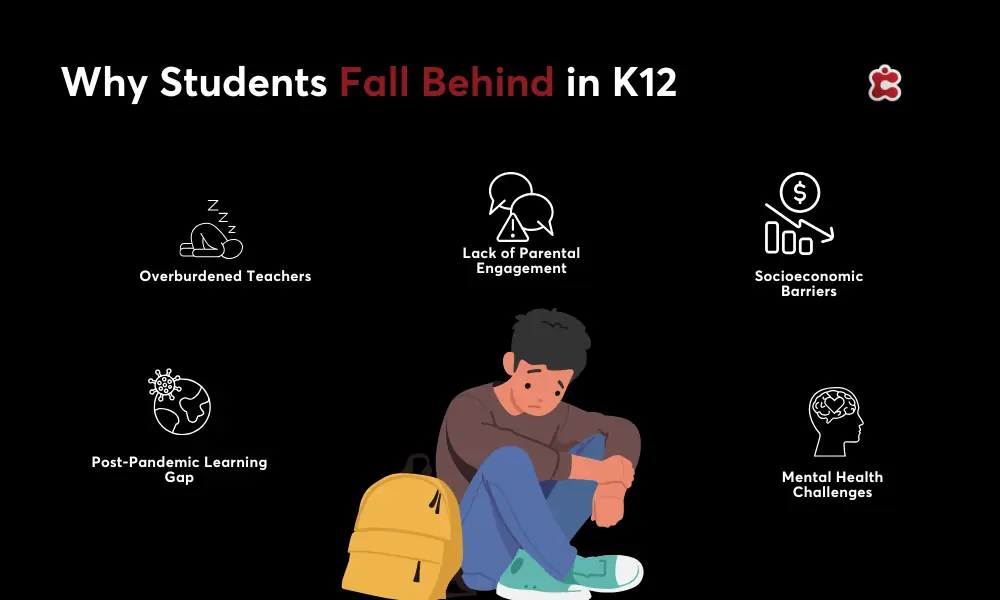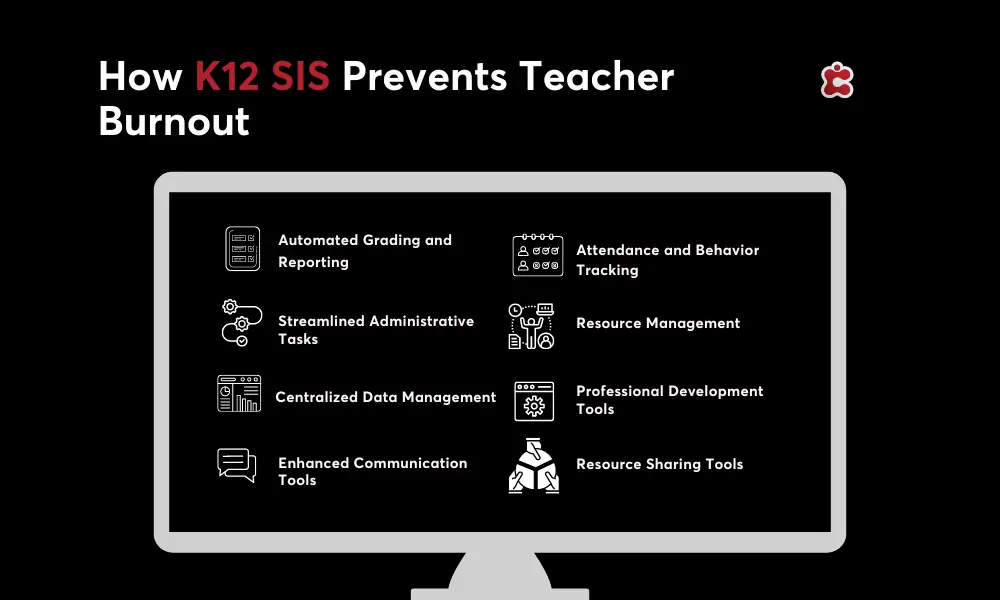The truth is, kids are falling behind. The pandemic is long gone, but its effects have left ripples in our school systems. In spring 2023, just 56% of American fourth-graders were performing on grade level in math—down from 69% in 2019. Numbers like these paint a sobering picture, but for teachers and administrators, they’re more than statistics; they’re everyday realities.
For K12 schools, the stakes couldn’t be higher. Falling behind academically doesn’t just hurt grades—it impacts confidence, motivation, and long-term success. But amidst these challenges lies a glimmer of hope: the systems and technologies schools have at their fingertips. Student Information Systems (SIS), in particular, offer a powerful way to not only track student performance but also intervene before small issues grow into larger problems.
We are going to break down the reasons why students are falling behind and show how an SIS can help your school address these challenges head-on. Together, we can turn these numbers around—and help every student get back on track.

Why Are Students Falling Behind?
There’s no one-size-fits-all answer to why students are falling behind, but several key factors are at play.
a. The Post-Pandemic Learning Gap
When the pandemic hit, many students were forced into remote learning, and the digital divide left some children without proper access to resources. Those who could adapt were often ahead, while others fell further behind. The learning loss is real, and it’s a gap that’s proving difficult to close.
b. Overburdened Teachers and Limited Resources
Teachers are feeling more pressure than ever. With larger class sizes and increased administrative tasks, many teachers simply don’t have the time or resources to give every student the attention they need. This means some students who might need extra help are slipping through the cracks.
c. The Role of Parental Engagement in Student Success
Parental involvement is critical for student success, yet many parents are unable to engage fully. Whether it’s due to work schedules, language barriers, or simply not knowing where to start, the lack of communication between home and school can leave students without the support they need.
d. Socioeconomic Barriers to Learning
External factors, like poverty, lack of access to technology, or language barriers, create huge hurdles for students. These challenges often mean students can’t participate fully in class, affecting their ability to learn.
e. Mental Health: The Invisible Obstacle
Increasingly, schools are seeing how mental health challenges, from anxiety to trauma, impact learning. Without proper socio-emotional support, many students struggle to stay focused or motivated, making it harder to succeed academically.
How an SIS Can Bridge the Gaps
| Feature | How It Helps | Why It Matters |
| Centralized Data for Early Intervention | Tracks grades, attendance, and behavior in one place, with real-time alerts for at-risk students. | Allows schools to act quickly before issues escalate. |
| Personalized Learning Plans | Enables tailored curriculums and resource allocation based on individual student needs. | Supports diverse learning styles and closes specific gaps in understanding. |
| Improved Communication Channels | Offers parent portals, instant notifications, and teacher-parent messaging tools. | Keeps everyone on the same page, fostering better collaboration for student success. |
| Streamlining Administrative Tasks | Automates grading, attendance, and reporting processes. | Gives teachers more time to engage with students and provide targeted support. |
| Insights Through Dashboards | Provides visualized data trends for easy decision-making by teachers and administrators. | Encourages data-driven strategies to improve classroom outcomes. |
| Scalability for All Class Sizes | Adapts to the needs of schools with diverse student populations. | Ensures no student is left out, regardless of class size or complexity. |
How to Use SIS to Help Students Falling Behind
Here’s a step-by-step guide to help your school use SIS tools to support students falling behind:
Step 1: Set Up Comprehensive Student Profiles
Start by inputting all relevant data into the SIS, including grades, attendance, behavior, and socio-emotional markers. A holistic student profile gives teachers a clear picture of each learner’s challenges and strengths.
Step 2: Use Analytics to Identify At-Risk Students
Leverage the SIS’s reporting and analytics features to spot patterns like frequent absences, declining grades, or behavioral issues. These insights can flag students who need immediate attention.
Step 3: Develop Personalized Learning Plans
With identified gaps, use the SIS to assign tailored resources, schedules, or accommodations to help individual students catch up. Whether it’s extra tutoring sessions or modified assignments, personalization is key.
Step 4: Open Communication
Activate parent and student portals to keep families informed. Share progress updates, upcoming deadlines, and teacher feedback. Communication tools ensure everyone is aligned in supporting the student.
Step 5: Track Progress and Adjust as Needed
Monitor student performance regularly using the SIS’s dashboards and reports. If a plan isn’t working, the SIS makes it easy to tweak strategies and try new approaches.
Step 6: Support Teachers with Automation
Free up teacher time by automating repetitive tasks like grading or attendance tracking. This allows educators to focus on one-on-one support for struggling students.
Supporting Teachers with SIS
Grading papers and tracking attendance are time-consuming yet essential tasks. An SIS automates these processes, ensuring accuracy while giving teachers back valuable hours in their day. Instead of spending evenings on paperwork, teachers can use this time to identify at-risk students, offer extra help, and personalize their teaching strategies.
With all student data, learning materials, and reports stored in one place, an SIS makes it easy for teachers to quickly access the tools they need. This efficiency enables them to focus their efforts on tailoring lessons and interventions for struggling students rather than getting bogged down by administrative details.
Lastly, SIS platforms also support collaboration among educators. Shared notes, progress reports, and communication tools allow teachers to coordinate strategies for students falling behind. By working as a team, they can provide consistent support and share best practices to address individual needs.

Classter’s SIS: A Solution for Struggling Students
When students fall behind, it’s not just about academics—it’s about identifying the root causes and creating a plan for success. Classter’s Student Information System is a comprehensive platform designed to address these challenges head-on, offering tools to support students, empower teachers, and unite schools and families.
Classter’s SIS stands out for its ability to centralize all student data in one easy-to-navigate platform. Teachers can monitor academic performance, attendance, and behavior in real-time, enabling them to spot issues early. This proactive approach ensures that at-risk students receive the right support when needed.
The platform also simplifies collaboration, allowing educators, administrators, and parents to communicate effortlessly. With features like parent portals and automated notifications, everyone stays informed and involved in the student’s journey. Classter goes a step further by offering tools for personalized learning plans, ensuring that each student’s unique needs are met with tailored resources and strategies.
Start empowering your teachers, engaging your parents, and supporting your students today. Book a Demo and discover how Classter’s SIS can make a difference in your school.
FAQ’s
An SIS uses data analytics to track patterns in attendance, grades, and behavior. Real-time alerts notify educators of students who may need additional support, enabling timely intervention.
Key features include centralized data management, automated grading and attendance tracking, communication tools, personalized learning plans, and real-time analytics dashboards for decision-making.
Classter offers a fully integrated solution that combines data centralization, collaboration tools, and personalized learning plans in one easy-to-use platform, tailored to meet the needs of K12 schools.

